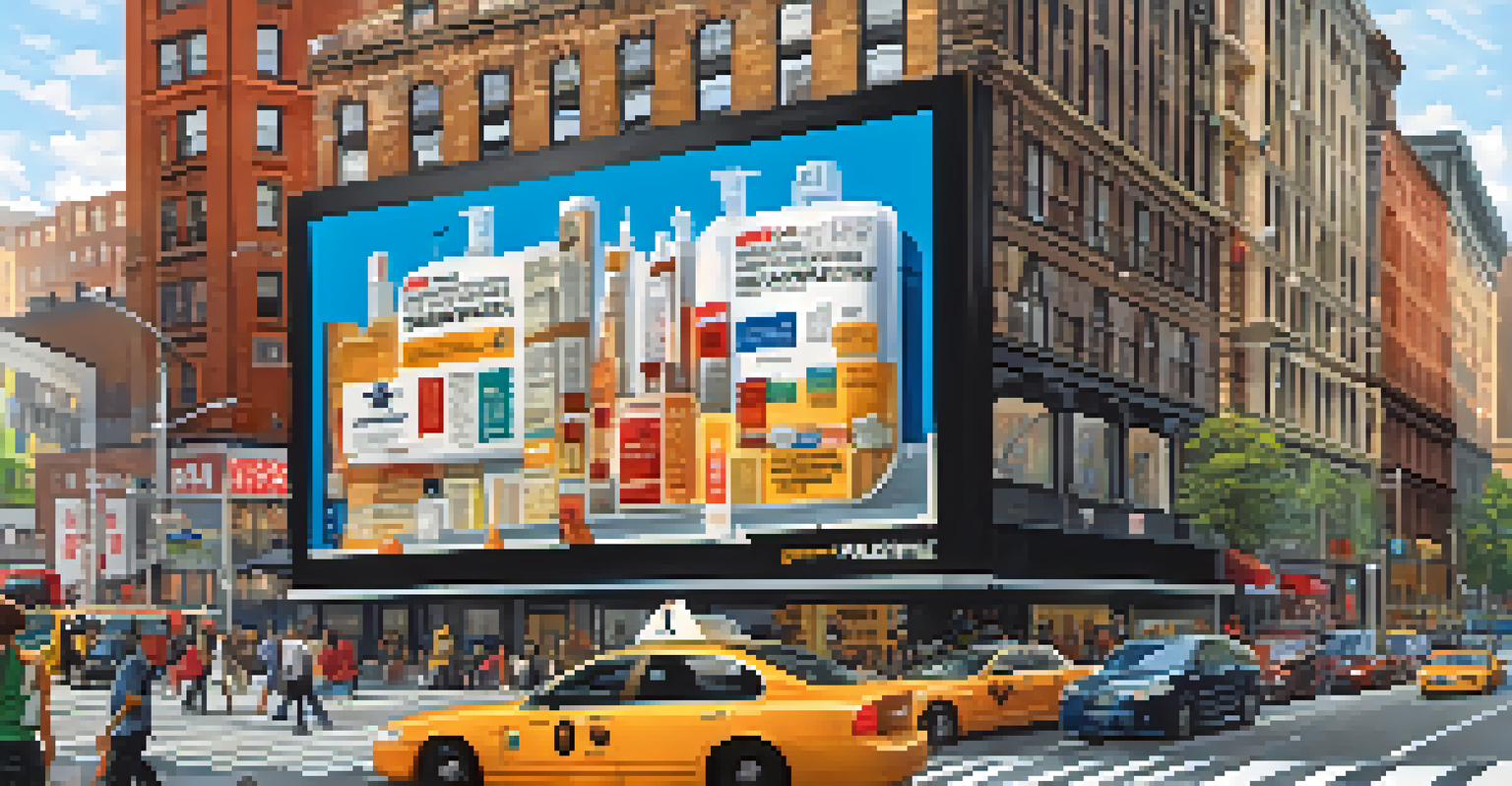Public Health Education Campaigns in New York City

Understanding Public Health Education Campaigns
Public health education campaigns are structured efforts to inform and educate the public about health issues and promote healthy behaviors. In cities like New York, these campaigns address various topics from smoking cessation to vaccination awareness. The goal is to empower individuals with the knowledge they need to make informed health choices, ultimately leading to healthier communities.
Public health education is a powerful tool for empowering individuals and communities to make informed decisions about their health.
These campaigns often utilize various media platforms, including social media, billboards, and public events, to reach a broad audience. For example, the NYC Department of Health frequently partners with local organizations to amplify their message. This collaborative approach ensures that the campaigns resonate with diverse populations throughout the city.
By making health information accessible and engaging, public health campaigns can significantly influence public behavior. They not only raise awareness about health risks but also encourage preventive measures to reduce these risks. This multifaceted approach is at the heart of what makes public health education so vital.
The Role of Social Media in Campaigns
In the digital age, social media has become a powerful tool for public health campaigns. Platforms like Facebook, Twitter, and Instagram allow health officials to share information rapidly and engage directly with the community. For instance, campaigns around mental health awareness have effectively used social media to reach younger audiences, sparking discussions and reducing stigma.

By crafting shareable content, public health messages can travel far beyond their initial audience. This virality can amplify important health messages, making them more accessible to those who might not engage with traditional media. For example, the NYC Health Department's #NYCWell campaign encourages conversations around mental health, making help more reachable.
Public Health Campaigns Empower Communities
Public health education campaigns inform and engage communities to promote healthier behaviors and choices.
Moreover, social media allows for real-time feedback, enabling campaign organizers to adjust their strategies based on audience engagement. This adaptability is crucial for addressing emerging health trends or misinformation. Ultimately, social media not only disseminates information but also fosters community support around health issues.
Highlighting Successful NYC Campaigns
New York City has seen numerous successful public health campaigns, each tailored to address specific community needs. One notable example is the 'Stop Smoking' campaign, which effectively combined media outreach, support resources, and community involvement to help residents quit smoking. This comprehensive approach has led to a significant decrease in smoking rates across the city.
In the digital age, social media is not just an optional extra; it is essential for engaging with communities on health issues.
Another impactful initiative is the 'Get the Shot' campaign, aimed at increasing vaccination rates among children and adults. By providing clear information about the benefits of vaccines and combating misinformation, this campaign has improved public health outcomes. It showcases how targeted education can lead to higher participation in vaccination programs.
Furthermore, the NYC Health Department's efforts during the COVID-19 pandemic highlighted the importance of timely and accurate information. The city's rapid response through public service announcements and community engagement was crucial in encouraging mask-wearing and vaccination. These campaigns underline how public health education can adapt and respond to urgent health crises.
Community Involvement in Health Campaigns
Community involvement is essential for the success of public health education campaigns. When local residents participate in shaping the messaging and outreach, the campaigns resonate more with the target audience. This grassroots approach ensures that the health information is culturally relevant and accessible to diverse populations in NYC.
For example, organizations like Community Health Workers (CHWs) play a pivotal role in bridging the gap between health services and communities. They provide education and support tailored to the unique needs of their neighborhoods. By incorporating local voices into the planning process, campaigns can better address specific health concerns.
Social Media Amplifies Health Messages
Social media serves as a vital tool for public health campaigns, enabling rapid information sharing and community engagement.
Moreover, community events, such as health fairs and workshops, create opportunities for direct interaction between health professionals and residents. These settings foster trust and encourage open conversations about health issues. Ultimately, involving the community not only enhances campaign effectiveness but also builds lasting health partnerships.
Measuring Campaign Effectiveness
To understand the impact of public health education campaigns, it's crucial to measure their effectiveness. This often involves evaluating changes in public behavior, awareness, and health outcomes before and after the campaigns. For instance, surveys and feedback forms can provide valuable insights into how well the message was received.
Additionally, analyzing data trends can help public health officials ascertain the effectiveness of specific outreach methods. If a campaign leads to increased vaccination rates or decreased smoking prevalence, that data can guide future efforts. This continuous evaluation is key to refining strategies and improving public health initiatives.
Moreover, sharing success stories and lessons learned fosters transparency and accountability. By reporting on campaign outcomes, public health agencies can build trust with the community and stakeholders. This transparency not only strengthens relationships but also encourages ongoing support for future campaigns.
Addressing Challenges in Public Health Campaigns
Despite their importance, public health education campaigns face several challenges. Misinformation, particularly on social media, can undermine the effectiveness of even the best-planned campaigns. To counter this, public health officials must not only provide accurate information but also actively engage in correcting false narratives.
Another challenge is reaching underserved populations who may have limited access to health information. Language barriers, economic disparities, and lack of internet access can hinder effective communication. Campaigns must strategize to ensure that their messages are inclusive, utilizing materials in multiple languages and connecting with community organizations.
Community Involvement Enhances Effectiveness
Engaging local residents in shaping health campaign messages ensures cultural relevance and greater impact.
Finally, sustaining public interest over time can be difficult. Health campaigns need to evolve and remain relevant to keep the community engaged. This can involve refreshing messaging, introducing new topics, or leveraging current events to maintain momentum. Addressing these challenges is essential for the long-term success of public health education.
The Future of Public Health Education in NYC
Looking ahead, the future of public health education in New York City is promising yet demands adaptability. As technology continues to evolve, so too must the strategies employed to educate the public. Innovative approaches, like virtual reality experiences or gamification, could enhance engagement and understanding of complex health topics.
Additionally, integrating health education into schools and community programs can cultivate a culture of health awareness from a young age. By teaching children about nutrition, exercise, and mental health, we can empower future generations to prioritize their well-being. This proactive approach could lead to a healthier city in the long run.

Lastly, collaboration between various stakeholders—government agencies, non-profits, and community members—will be vital. A united front can tackle pressing health issues more effectively and develop comprehensive strategies to address them. As we move forward, a collective effort will ensure that public health education remains relevant and impactful for all New Yorkers.